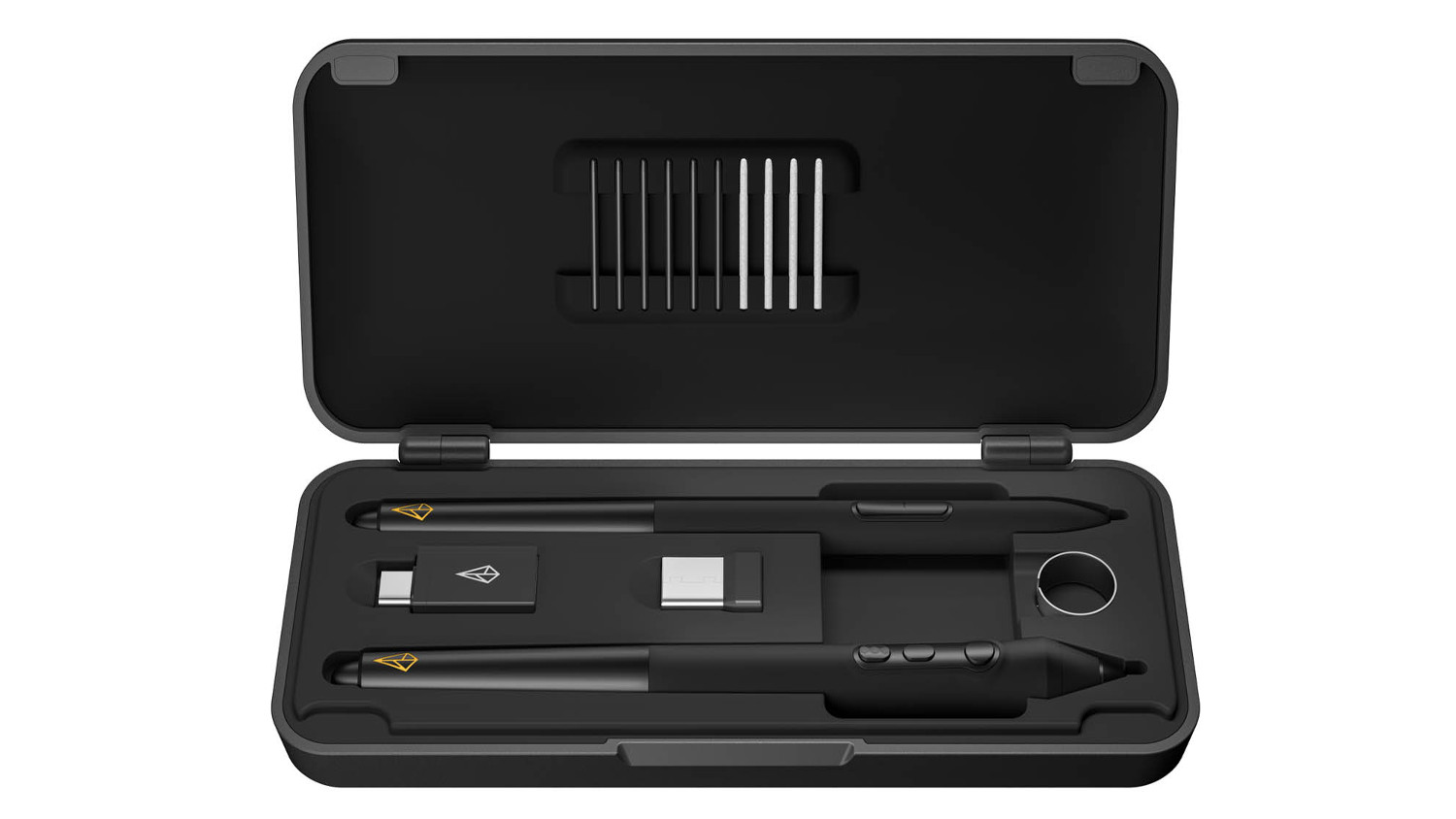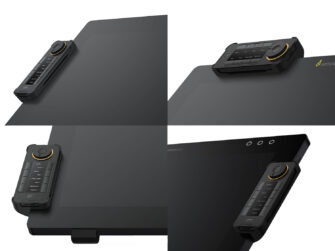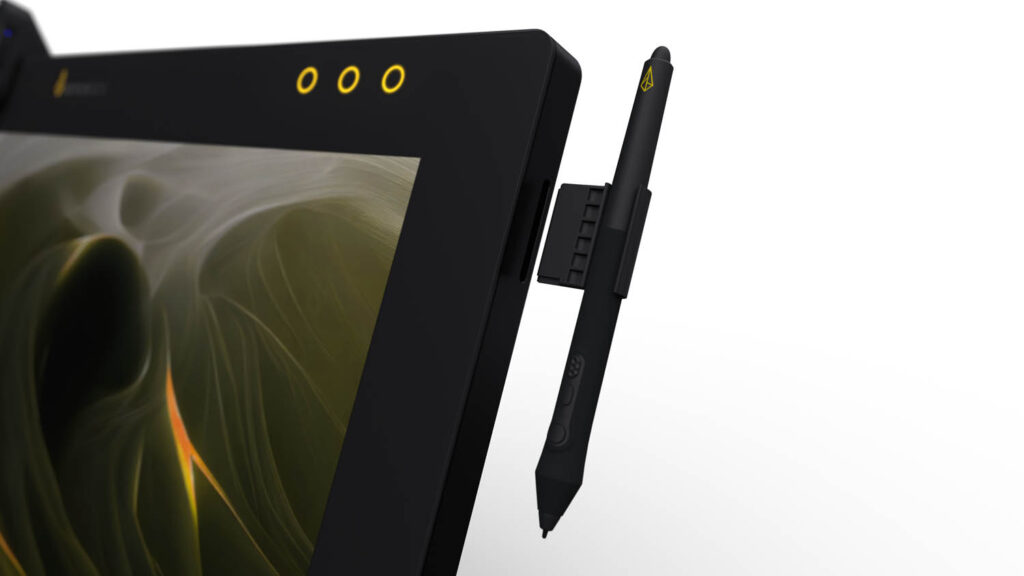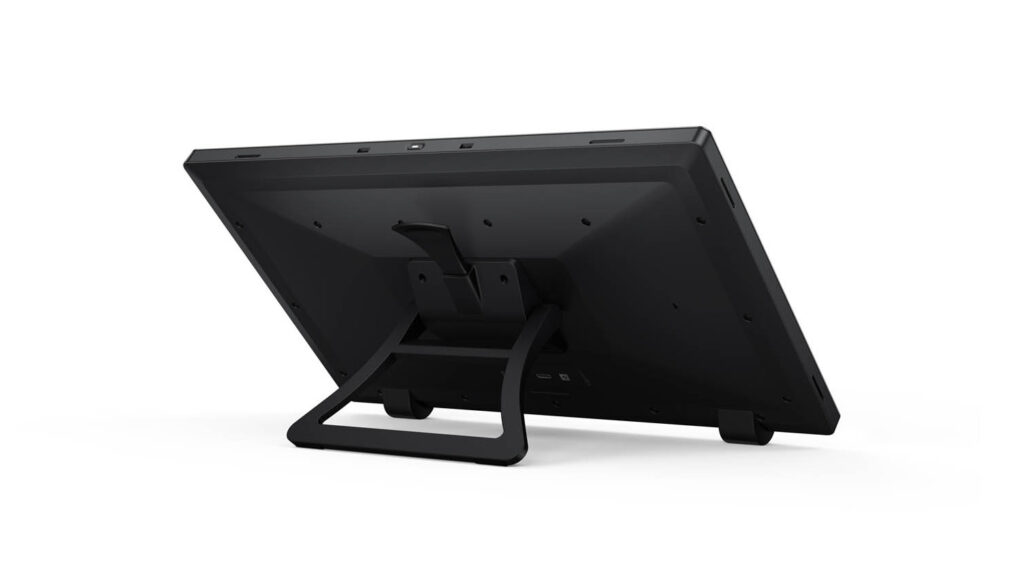With its first foray into display tablets, Xencelabs hasn’t just tackled the issues that users report with current products. Instead, it’s moving the whole sector forwards — and by some significant distance, writes Stephen Holmes
While pen on paper holds a special appeal for many designers, it’s often the case these days that they go digital right from the start of their project, with a stylus and screen.
Scratchy desk graphics tablets went some way to capturing the natural flow and movement of sketching, but it took the Wacom Cintiq to really change the game, by allowing creators to draw directly in pixels on the display.
Twenty years on, few companies have been able to mount a credible challenge to Wacom. Many, in fact, have gone down the path of licensing Wacom technologies for their own products.
Enter Xencelabs, pronounced ‘Sense Labs’, which broke with this tradition when it launched in 2019. (In fact, many of the earliest employees of the company previously worked at Wacom.)
Xencelabs has already impressed the DEVELOP3D team with its graphics tablets, the Media Pen Tablet and the Medium Tablet. So it makes sense that the next logical step for the company would be to address the space dominated by Wacom Cintiq.
While that might seem a daunting task, Xencelabs has pulled out all the stops with its debut effort, the Pen Display 24.
Boxing clever
From the get-go, you realise that this is a product that is not only going punch for punch with the competition, but also is willing to go that extra round. Even before we’ve unboxed it, the packaging lists the extensive list of kit inside.
If one of the big gripes about Wacom has been its stinginess with peripherals (and the mark-up these incur), then the Pen Display 24 is like a giddy aunt on Christmas morning, unloading presents left, right and centre.
Aside from a wealth of connectors, there’s a case containing two different styluses. The chunky three-button pen has a nice heft and hand-feel, plus an eraser on its other end. A neater, twobutton Thin Pen, much like you’d use on a mobile device, offers a lightweight option.

The pens offer individually customised settings, meaning that with just a few clicks, you could use one pen for detail work and another for broad strokes – or a whole wealth of options at your disposal.
Also included is a pack of two different types of nibs, and a set of pen clips to attach at any of the eight points around the screen. The clip system has been designed by Xencelabs to allow users to produce their own peripherals. With CAD models available for the attachments, users can design and 3D print their own mounts — for a phone, iPad, or whatever they choose (or likely buy, from some enterprising folks online).
It’s a niche point, but one that speaks to the creatives that Xencelabs knows will be using its product. And it’s these little touches that make this product as customisable as the user wishes it to be.
On that topic, the box also contains the Xencelabs Quick Keys device. The sheer abundance of hot-key customisation that this offers up is quite staggering. Up to 40 unique short-cut keys can be assigned, per application, using the eight programmable keys and five key sets.
It’s a lovely, tactile little companion that you can squirrel away on your workspace however you please, clipping it via the included holster onto the display frame, or plonking it on your desktop.
An OLED display lists functions, and a pleasing jog wheel makes selecting options a breeze.
And then there’s the stand. Built into the device is a carry handle that seamlessly flips into an adjustable tilt stand with one hand. With a range from 16 degrees to 72 degrees, it’s a big improvement on the stumpy popout legs that come as standard on Wacom’s 24-inch Cintiq Pro, and offers ergonomic angles that let you get straight to work. To add extra inclines, you can attach any mount to its inbuilt standard VESA mount.
It’s here that Xencelabs is keen to assert its value. The stand won’t suit everyone, but with Wacom’s own-brand stands charged as optional extras priced anywhere from over £300, and a VESA mount costing £70, this is an easy win for the new kid on the block.
Screen time
So far, so cost efficient. You’d imagine that piling the kit high and selling it cheap would be a worthwhile tactic to pick up traction in this market, but I can assure you that you’ll stay for the performance. The device’s unbroken surface, from edge to edge, is a beautifully smooth workspace to glide across.
The ‘active’ area size is 527 × 296mm, which gives a healthy bezel. Meanwhile, its 3,840 x 2,160 pixels at 60Hz is the 4K UHD resolution that most people would expect from a flagship product like this, but less expected is the Pen Display 24’s ability to reduce glare from even the harshest of lighting.
Trademarked Super-AG etching means we were able to use it with lights on overhead, or to the side. It even served up excellent, unimpeded results when I was sat next to a window. It’s that good.
The etching offers little impedance to the over 1.07 billion colours the display can output, which, without reeling off all the stats and validations awarded to it, are every colour, tone and shade that even the most serious of visualisation artists will ever need.
Having watched so many designers using tablets in low light conditions for so long, this ability alone would be worth seeking out a demo.
The surface offers a paper-like quality for nib movements, and tracking is excellent — a quality its makers put down to the way the surface has been optically bonded to reduce visual gap between pen nib and cursor.
With no discernible lag, and being able to sense 8,192 levels of pen pressure, it is instantaneous to use, reacting to even the slightest change in stroke.
Options list
Moreover, as with most things in the Xencelabs software, pressure curves can be mapped and customised. Three programmable control buttons are the only switchgear on the device, but offer fast access to settings, while elements like brightness are all controlled in the user interface (UI).

You get the sense that the Pen Display 24 is not just an item to bolt onto your desk, but a package that has been created to optimise how a user wants to work with a tablet. Even down to its Virtual Tablet mode, which allows for your other displays to be quickly mapped, moving windows around, it’s all there to create the best working environment and tools for you without you having to delve into a thick manual of settings to dig out what you need.
Even though the Xencelabs software UI is swift and straightforward, with this many options, it may prove a bit of an exercise to set up the Pen Display 24 precisely as you want it.
But once you have all these little elements dialled in, then they become issues you’ll never have to think about again – which is the perfect way to work.
The final positive is that the entire unit is silent. There’s not a fan to whirr. A custom heatsink instead removes any excess temperature, leaving you questioning just when your workstation became so loud.
Conclusion
We talk a lot about user-observed design, and Xencelabs has gone to admirable lengths to understand just what designers want from this product. Every element can be tweaked to the user’s satisfaction, while at the same time, the device can still be up and running, out of the box, in no time at all.
The Pen Display 24 also offers sound construction. We don’t expect these devices to do much in the way of travelling, but given our review model had already put in some considerable miles between tradeshows and testers before it reached us, the build quality is solid, and that goes for the pens and Quick Keys device, too.
The design and software is clean and user-friendly, and the overall package is great value for money. It’s a piece of kit worthy of the real estate it will command on your desktop.
Specifications
» 23.8-inch OLED display with antiglare etched glass
» 3,840 x 2,160 (UHD) display resolution
» 1.07 billion colours (99% Adobe RGB / 93% DCI-P3)
» USB-C port with DisplayPort Alternate Mode (UHD), or DisplayPort (UHD) and USB-C/USB-A, or HDMI 2.0 (UHD) and USB-C/USB-A
» PC: Windows 7 or later | Mac: OS X 10.11 or later | Linux
» 6.0kg weight » 618 x 388 x 35 mm
» Xencelabs Tilt Stand, adjustable from 16 to 72 degrees
» 3-Button Pen v2 + eraser, Thin Pen v2 + eraser (EMR, pressure-sensitive, cordless, batteryfree with 8,192 pen pressure levels) £1,542 (Ex VAT)








